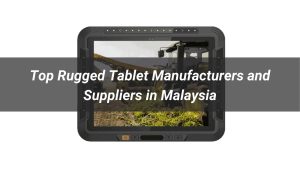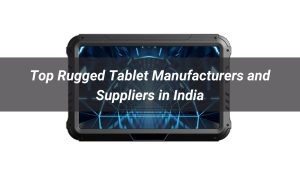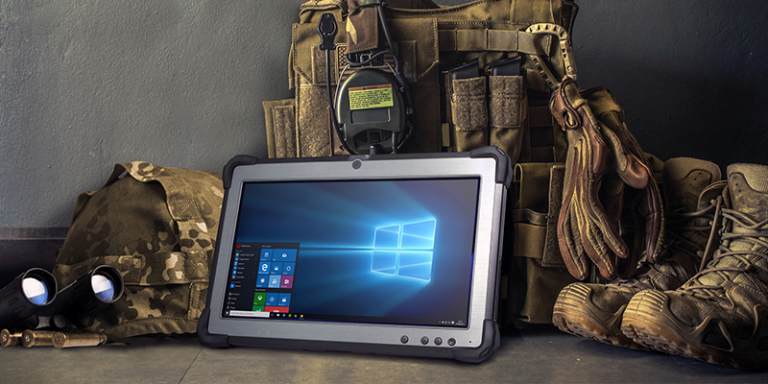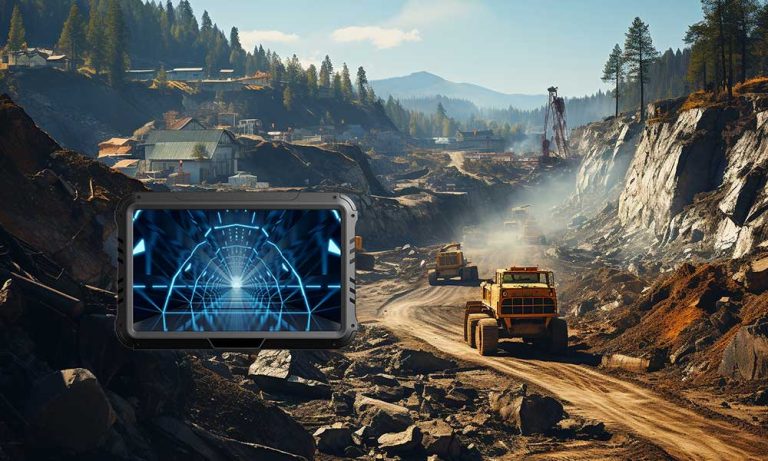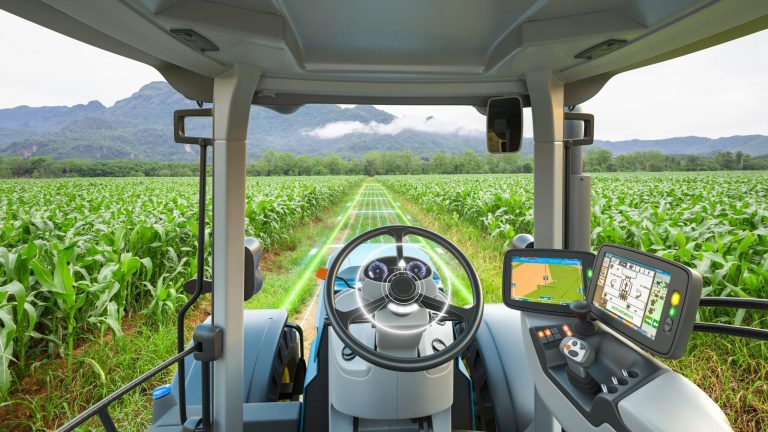In the modern mining industry, technology plays a pivotal role in optimizing operations, ensuring safety, and driving productivity. Among the numerous technological innovations that have transformed mining operations, rugged tablets have emerged as indispensable tools. These specialized devices, often referred to as mining tablets, are designed specifically to endure the extreme environments that miners face daily. But what exactly makes a mining tablet durable and rugged enough to withstand such harsh conditions? And why is this durability so crucial for mining operations? In this article, we will explore the key aspects of ruggedness and durability that set mining tablets apart from standard tablets, as well as the importance of these features in real-world mining scenarios.
The Harsh Realities of Mining EnvironmentsMining environments are among the most challenging workplaces in the world. They are often characterized by extreme temperatures, high levels of dust and moisture, and frequent exposure to chemicals and rough handling. Workers in mining fields operate in conditions that range from deep underground tunnels to open-pit mines, where weather and terrain can vary drastically. A mining tablet must be able to perform reliably in these tough conditions without suffering from breakdowns or damage.
Temperature Extremes: Mining operations can take place in extremely hot or cold conditions. Underground mines, especially those at greater depths, can have very high temperatures, while some open-pit mines in colder climates can expose devices to freezing conditions. A mining tablet must be capable of functioning in both hot and cold environments, which often necessitates a wider operational temperature range.
Exposure to Dust and Water: Mines are notorious for being dusty environments. Fine particles can infiltrate devices, causing damage to sensitive electronics. Furthermore, water exposure—whether from underground water sources or external weather conditions—can easily ruin unprotected electronics. Therefore, mining tablets must be designed with dustproof and waterproof capabilities, typically certified under IP (Ingress Protection) ratings.
Rough Handling and Drops: Mining workers often need to carry equipment across rugged terrain, making accidental drops or impacts inevitable. Standard consumer tablets would likely break after just a few drops, but mining tablets are built to absorb shocks and impacts, ensuring that they continue to function even after being dropped from significant heights.
Vibration Resistance: Heavy machinery is an integral part of mining operations, and this machinery generates significant vibrations that could harm delicate electronics. Mining tablets need to withstand continuous vibration without compromising performance, particularly when mounted on vehicles or equipment.
Key Features of a Rugged Mining Tablet
To meet the demands of such harsh environments, mining tablets are equipped with several durability-enhancing features that set them apart from consumer-grade devices. Below are some of the key characteristics that make mining tablets rugged and reliable:
1. Rugged Housing and Enclosures
The first line of defense for any mining tablet is its physical housing. These tablets are encased in robust enclosures made of materials like hardened plastic, magnesium alloy, or reinforced rubber. These materials provide a layer of protection against impacts, drops, and vibrations, ensuring that the internal components remain intact even in rough conditions. Mining tablets are often designed to meet military-grade durability standards, such as MIL-STD-810G, which certifies that the device can withstand drops, shocks, and extreme environmental conditions.

learn more:2025 Top 10 Vehicle Mount Computer Manufacturers in the World
2. IP Ratings for Dust and Water Resistance
One of the most critical certifications for mining tablets is their IP rating, which measures their resistance to dust and water ingress. An IP rating consists of two numbers: the first indicates protection against solid particles (dust), and the second measures protection against liquids (water). A mining tablet with an IP65 or higher rating is ideal for mining environments. For example, a tablet with an IP68 rating would be fully dustproof and capable of withstanding prolonged immersion in water, ensuring that it can operate even in the dustiest and wettest parts of a mine.
3. Wide Operating Temperature Range
Since mining operations take place in environments with fluctuating temperatures, mining tablets are designed to operate reliably in extreme hot and cold conditions. The best mining tablets can function within a temperature range of -20°C to +60°C, allowing them to be used in both underground mining operations, where temperatures can soar, and in colder climates, where temperatures may plunge. Tablets with such a wide operational range are essential for maintaining productivity regardless of the external climate.
4. Shock and Vibration Resistance
In mining environments, where heavy machinery is constantly in use, devices are exposed to frequent vibrations. Mining tablets are built to handle continuous exposure to such vibrations without experiencing internal damage. Many rugged tablets are certified to MIL-STD-810G standards for shock and vibration resistance, ensuring that they can be used in vehicles, machinery mounts, or on handheld mounts without compromising performance or longevity.
5. Gorilla Glass or Shatterproof Screens
The screen is one of the most vulnerable parts of any tablet. For mining tablets, the display must be tough enough to resist cracks and shattering from accidental drops or impacts. Many mining tablets are equipped with reinforced glass, such as Corning Gorilla Glass, which offers increased scratch and shatter resistance. This feature ensures that the screen remains readable and functional even after being exposed to tough handling.

6. Sunlight-Readable Displays
Mining operations often take place outdoors or in areas with limited lighting. A mining tablet must have a display that remains visible under direct sunlight or in low-light conditions. Sunlight-readable screens with high brightness levels (measured in nits) allow workers to read and interact with the device in various lighting environments without straining their eyes.
Why Durability Matters in Mining Tablets
The durability and ruggedness of a mining tablet directly impact the overall productivity, safety, and cost-efficiency of mining operations. Below are some key reasons why durability is so crucial for mining applications:
1. Minimizing Downtime
In mining, downtime can be extremely costly. Equipment failures or interruptions in data collection can lead to delays in production, safety risks, and increased operational costs. A rugged mining tablet that continues to function despite exposure to harsh conditions minimizes the risk of downtime. Workers can continue using the device without worrying about malfunctions caused by drops, dust, or water exposure.
2. Enhanced Worker Safety
Safety is a top priority in the mining industry, and rugged mining tablets play a significant role in ensuring that workers remain safe on the job. These tablets are often used to track worker locations, monitor hazardous conditions, and relay important safety information in real time. A device that fails to operate in critical moments can endanger lives, making the durability of the mining tablet essential for maintaining safety protocols.
3. Long-Term Cost Savings
While rugged mining tablets tend to have a higher upfront cost compared to consumer-grade devices, their durability results in long-term cost savings. A rugged tablet that can withstand the rough conditions of a mine is less likely to need frequent repairs or replacements. This reduces the total cost of ownership (TCO) over time, making rugged tablets a smart investment for mining companies looking to optimize their technology spending.
4. Reliable Data Collection and Communication
Mining operations rely heavily on accurate data collection and communication between workers, equipment, and supervisors. Whether it’s tracking resources, monitoring machinery performance, or sending safety alerts, a rugged mining tablet ensures that data can be collected and transmitted reliably in real time. Durability features, such as dustproofing and waterproofing, help maintain the integrity of the data collected, even in the harshest environments.
The mining industry demands equipment that is as tough as the environments it operates in, and the mining tablet is no exception. Durability and ruggedness are critical features that ensure these devices can withstand the harsh conditions of mining operations without compromising performance or reliability. From extreme temperatures and dust to drops and continuous vibrations, mining tablets are built to handle it all, making them invaluable tools for modern miners.
As technology continues to evolve, so too will the capabilities of mining tablets. However, the core requirement for durability will remain unchanged, as the harsh realities of mining environments will always demand robust solutions. For mining companies looking to improve productivity, enhance safety, and minimize costs, investing in rugged mining tablets is a strategic move that pays off in the long run.
In 2025 and beyond, we can expect mining tablets to continue pushing the boundaries of durability, offering even greater levels of protection and functionality for the challenging environments of the mining industry.


